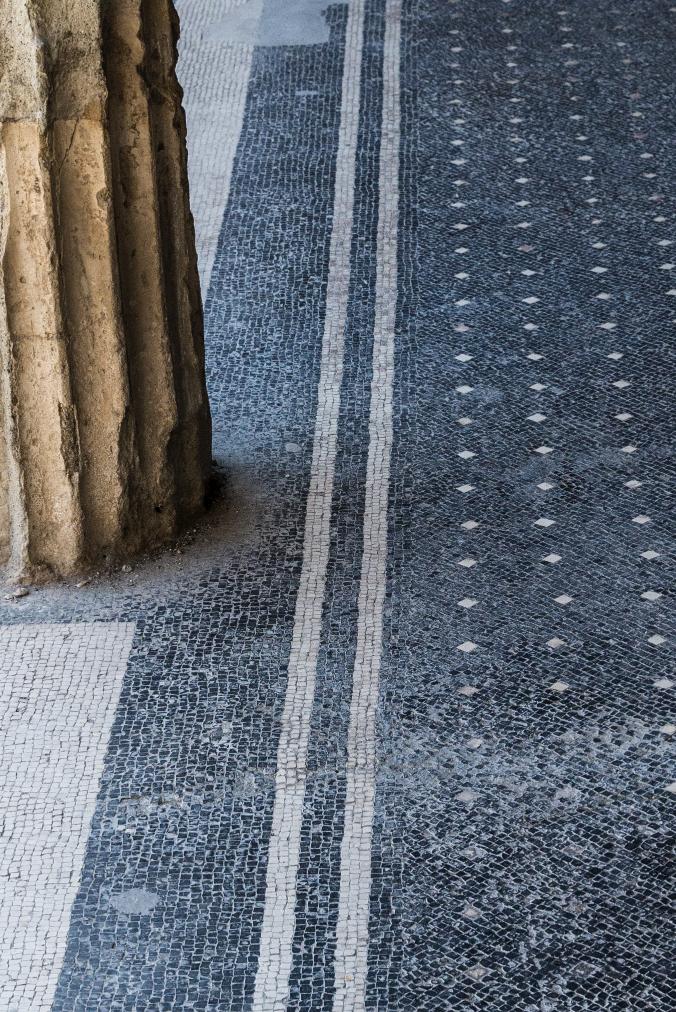I am going to post this as an answer although it is probably more of a long comment.
I too am fascinated with these "old era" mosaic works.
Honestly, the video by Spoon Graphics linked to in the comment above from @user287001 is very good and the closest you will get to a more automated way to make your mosaics. If you want to pursue this then I suggest you study this video tutorial until you fully understand the techniques he uses to achieve his results. The pattern brush and offset paths are pretty straightforward- the harder part is filling in the gaps and making the overlaps convincing. Anyway, it is good stuff.
Back to the more "old world" mosaics- the only thing I can say is that I see these as absolute artistry. I have seen 2 different styles of this from antiquity. The first is more geometric pattern designs or simple drawings- usually with fewer colors like these.




The other "style" is more like a painting or a depiction of a scene. These are not simply the "drawings" of things or scenes (which would be like a cartoon depiction) but involve what I would call "fine artistry"- namely involving lighting and shading. This requires a true artists eye to create as well as a deep understanding of lighting and shading (otherwise they will look like a cartoon). This can be learned some and does come more natural to some people but requires an ability to "see the light" and reproduce that rather than just only the scene.
Following is an example of this- notice the shading on the figures and especially the shading of the fan shapes above the characters. This is a flat mosaic wall but, even in an extreme close up view the depth can be seen. And notice the transition coloring of the tiles in the shading. This is the thing that is next to impossible to do "automatically" digitally. Hence all the suggestions to the effect that this is a more manual process which can be done digitally (of course) but is a learned and painstaking process which requires a deep level of skill and understanding and time.


These photos are from a trip to Italy I was fortunate enough to make several years ago. Some are from Pompeii or Herculaneum (can't remember which) and some from Rome. If you like this I highly suggest a trip there- it will knock your socks off- as it did mine.







